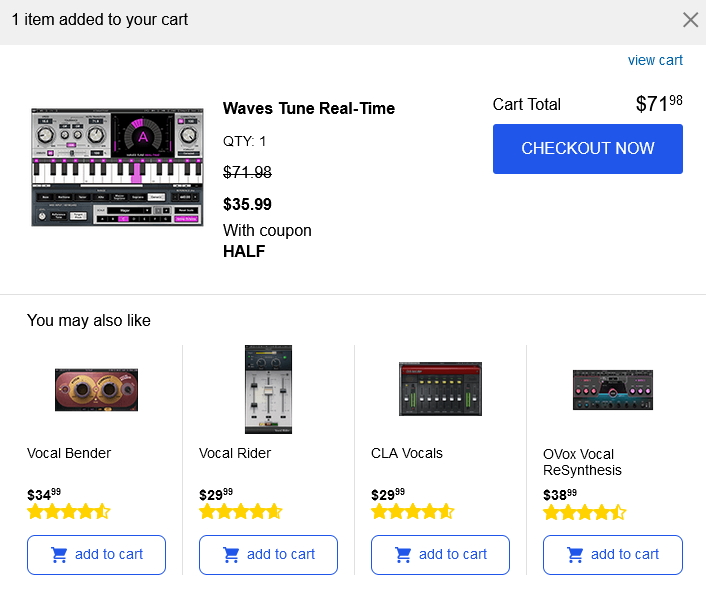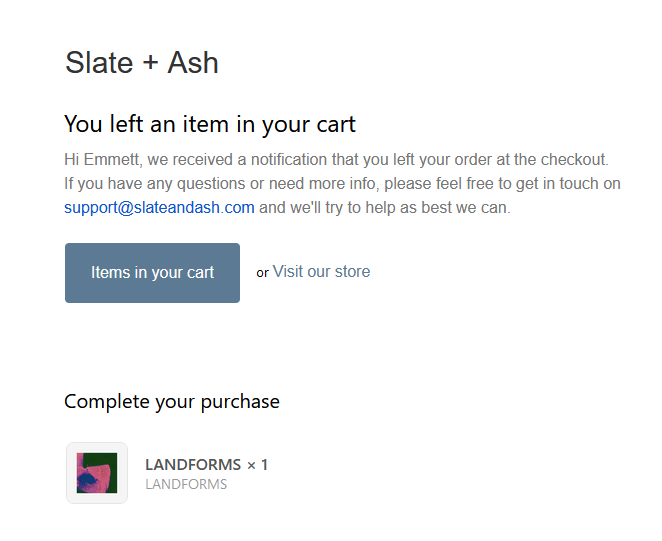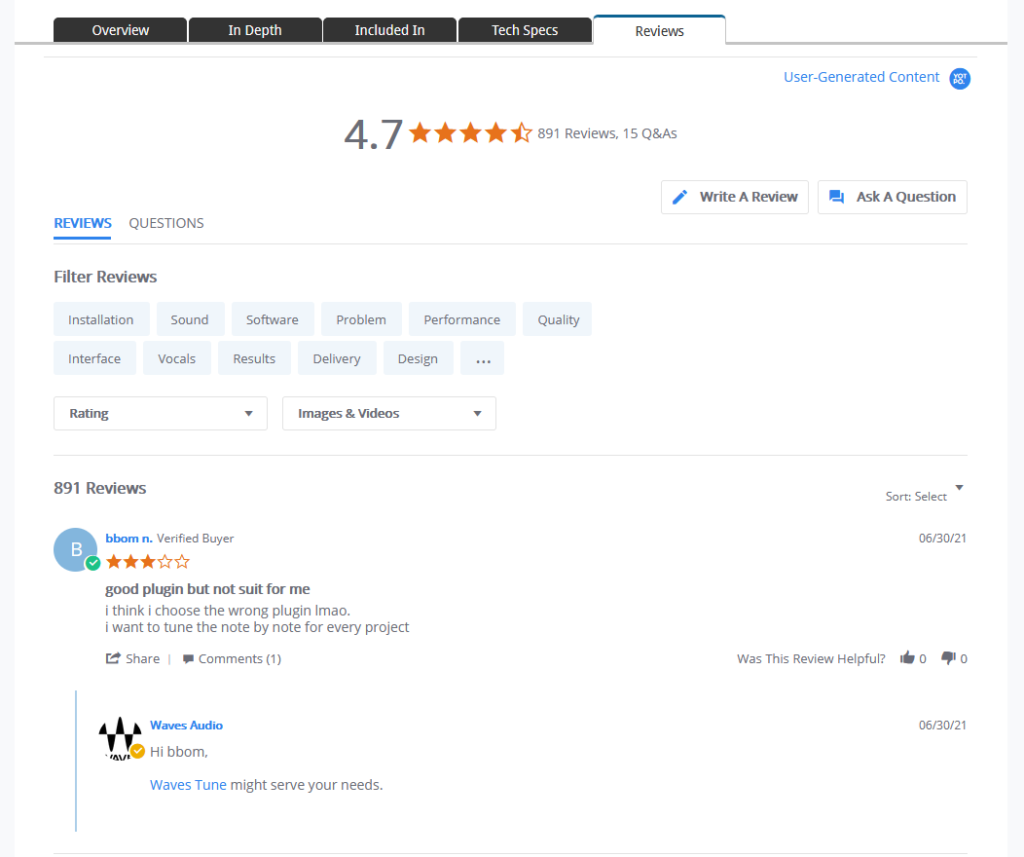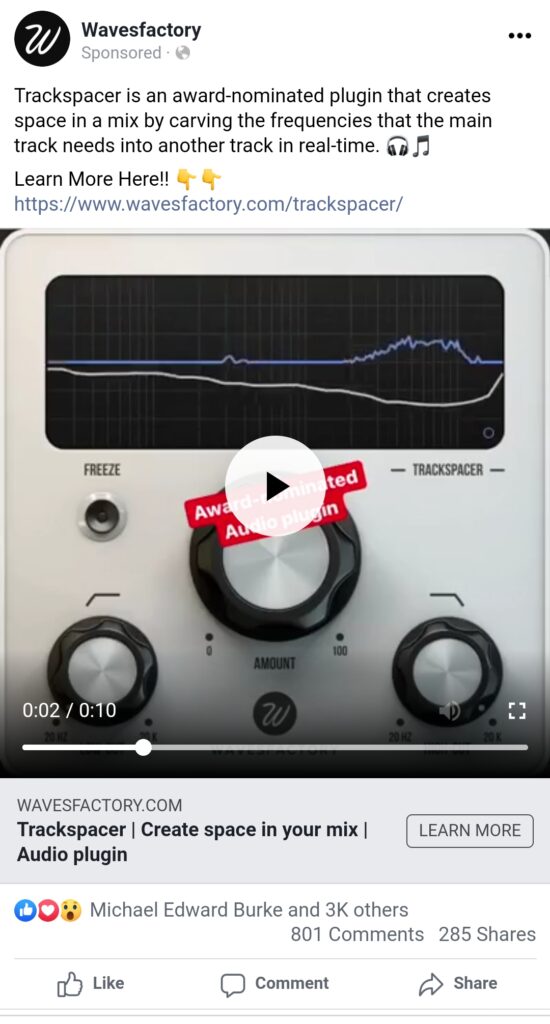Advertising, Business, eCommerce
10 Ways to Increase Revenue from Your Sample Library & Plugins
- By Emmett Cooke
- No Comments
30 Jun

With many online re-sellers and distributors to choose from, customers expect (and demand) more from their online shopping experience and you have to work harder than ever to compete for their dollars.
Any business that sells its products online, whether digital or physical, is in a constant battle with the competition for more sales, more repeat customers, and increased profit margins.
Fortunately, there are dozens of ways to get customers to buy more, buy bigger, and keep coming back for more. In this blog, you’ll learn 10 easy-to-implement ways of upping your eCommerce game to increase both your sales and revenue.
1. Cross-Sell and Upsell
Cross-selling is a fantastic way to encourage impulse buys and increase your average basket size. Showing customers a selection of products that go nicely with the item they’re looking at can tempt them to spend more.
For example, say the customer is buying a compressor, you could show them an offer on an EQ plugin at the cart stage if they add it to their cart too. Here’s how Waves do it:

Upselling at the checkout stage is another intelligent tactic to get your customer to spend more. This is a case of giving them an option to upgrade their selection (make sure the price difference isn’t too extreme.)
For example, you could offer the “Pro” version of a sample library (with more presets) for $10 more at the cart stage.
2. Add Videos
Putting a video on your main product pages can significantly boost revenue. Humans process the information in a video much faster than reading a product description. Providing the customer with a visual showing the product in action will speed up their decision process and entice them to take the plunge.
Videos are especially powerful for brands trying to sell products that look their best in action or need a demonstration to show off their features. You can also include customer testimonials in the video. Seeing other people rave about your product might be just what they needed to make a decision.

Tip 1: Ensure you have a very strict structure to your videos along with Youtube “chapters” so the customer knows where to skip to if they want the “walkthrough” or “sounds” section etc.
Tip 2: Use Canva to create eye catching Youtube thumbnails without the need for a designer.
3. Optimise for Mobile
According to businesswire.com, by the end of 2021, mobile sales will account for 53.9% of all eCommerce sales. So if over half of all eCommerce revenue is coming from mobile users, optimising your site for mobile has never been more important.
Here are some key points to keep in mind for creating a mobile-friendly site:
- Text isn’t too long: if the text isn’t readable, or is overwhelming to look at, customers won’t stick around.
- Straightforward checkout: a clunky mobile checkout will frustrate users and lead to cart abandonment.
- Fast loading speeds: nothing hinders conversions more than a slow website.
- Easy to navigate: make sure your most important pages are easy to find and every button is clickable.
- Responsive: check your mobile site doesn’t cut off any design features or mess with functionality.
Tip: Use Responsinator to check how your website looks on multiple devices
4. Capture Cart Abandoners
When customers fill their basket and leave without buying, this is not a loss, but an opportunity waiting to be seized. Customers might drop off due to things like unexpected VAT, lack of payment options, or even just closing the tab and forgetting to return.

Check out our tips below for reducing cart abandonment rates:
- Be upfront about shipping: don’t hide these costs, as you might catch shoppers off guard.
- Include product images: if customers can see exactly what they’re buying, they’ll feel reassured about their purchase, and excited to buy.
- Show checkout progress: this helps to motivate customers to continue to the end.
- Enable guest checkout: Many users see setting up an account as an extra step. Let them complete their purchase in as few clicks as possible with guest checkout.
- Follow up advertising: email reminders and targeted ads can remind users of their forgotten cart and reel them back to your site to complete their order.
Tip: Great cart abandonment platforms include Jilt, Klaviyo and even Mailchimp
5. Show Customer Reviews
Adding customer reviews to your site is an essential trust factor that will make users confident in their purchase decision. According to 3D cart, reviews make customers 71% more comfortable buying a product.
You can place verified reviews throughout your website, under specific products and on your homepage.
According to BrightLocal, 68% of customers leave a review after being asked to do so. You can automate emails to invite users to leave a review post-purchase and even offer a reward for their trouble, like entry to a competition or a discount code for their next purchase.

Tip: The most popular reviews platform is YOTPO but it can be very expensive. Alternatives include Trustpilot or even Mailchimp (using review email automations)
6. Split Test
Split testing, aka A/B testing, is a method used to improve conversion rates. In a nutshell, it’s the process of showing website visitors the same page but with one element changed for half of the visitors.
Something as simple as your CTA text, banner image, or button colours can have surprising effects on purchase behaviour.
Data is power, and once you know what’s driving revenue, you can use that information to make changes to your website over time. You can also split test ads by using two versions of the text, visuals, or CTA buttons.
Tip: Use Optimizely or Crazy Egg.
7. Re-Target your Customers
Retargeting is one of the best ways to increase eCommerce sales. You create audience lists of people who have taken specific actions on your site, and retarget them with ads.
This could be groups of people who have visited your site, people who have landed on specific web pages, those who have purchased from your site before, and so on. Your copy and visuals should be crafted based on their action.
For example you might create a Facebook video ad that’s a quick 3 min walkthrough video of your plugin if they’ve already added something to the cart but haven’t purchased it.

One of the most effective ways to drive people back to your site is to show them the exact products they viewed or similar products. This helps to keep your brand top of mind and nudge them towards a sale. You can setup re-targeting adverts on Facebook to target users who have visited your cart page but not completed a purchase for example.
Tip: Try out Adroll to retarget users via adverts on other websites around the web. Its quite low cost and can provide good results.
8. Send “Drip” Campaigns
Drip campaigns are a set of automated emails that are sent to a customer based on their activity. They’re a highly targeted way of reactivating audiences who may not have purchased in a while and turning website visitors into repeat purchasers.
Some examples of drip campaigns might be:
- Recommendations: here’s another chance to cross-sell to your purchaser audience by sending them an email with similar products.
- Personalised discounts: a great way to drive more conversions is to trigger an automated email that thanks your customer for their loyalty and offers them an exclusive discount on their birthday.
- User re-engagement: “we haven’t seen you in a while, would you like to see our new plugin?”. Sending emails to only customers who haven’t opened an email in X months can be a useful way to target them specifically and help them “re-engage” in your emails, thus increasing your open rates in the long run. This campaign could have 3 stages:
- “We haven’t seen you in a while, here’s a 20% off code for any product“. If customer opens the campaign, they’re re-added back into your main “segment”. If they don’t open, then they’re sent the next email:
- “We hate getting too many emails too – are you still interested in ours?“. If customer opens the email, they’re re-added back into your main segment. If not, they are unsubscribed from your email list and sent one more email:
- “We hope you come back to us”. Customer has been unsubscribed, but this email contains a “resubscribe” button which they can click on to get re-added back into your newsletter.
Tip: Removing contacts from your email list who never open emails is beneficial in the longrun and is integral to maintaining a high open rate, which will convert to higher revenue over time.
9. Examine Analytics
If you’re an eCommerce business, chances are you’re running paid ads on the likes of Google and Facebook, have email marketing in place, and a site that’s optimised for SEO.
Constantly checking in on each channel to see what’s driving sales is crucial to improving your site’s overall profitability.
You can set up tracking in your ad campaigns and monitor results in Google Analytics to measure what campaigns specifically are giving the best ROI. Ensure your team regularly evaluates what’s working and what’s not, then adjusts campaigns and SEO accordingly.
This ensures you’re not wasting money on ineffective channels, and can spot opportunities for improvements across every platform.
Additionally, take a look at your “Goal Flow” in Google Analytics to see if people are dropping off at a certain point in the purchase process (cart page or checkout page) and see if you can reduce bounce rates at those parts to increase overall revenue in the long run.
10. Offer More Payment Options
Offering more payment options at the checkout page can result in a far higher conversion rate and lower dropoffs at the end of your sales funnel.

Paypal is one of the most popular payment options, followed by card (Stripe / Braintree etc.) but there are a lot of alternative payment solutions you can offer your customers also. For example:
- Partial.ly – customers can setup payment plans to purchase your product
- Amazon Pay – allow customers to pay via their payment details stored in their Amazon account
- Bitpay – receive payments via cryptocurrency
- Alipay – a Chinese digital wallet with over 1 billion users
- iDeal / Giropay / SOFORT – European bank transfer solutions
Tip: if you want to go further down that rabbit hole, you can offer select payment options to customers based on their location. For example, its likely European customers wouldn’t want to see Alipay options and vice versa.
This is of course not a definitive list and there are plenty of other options you can try to increase your revenue.
An alternative way to increase revenue is by decreasing your costs – Pulse can help with this. Pulse can reduce your Amazon S3 costs by up to 50% (while increasing download speeds for customers) as well as reduce customer support emails (reducing money spent on customer service) freeing up your time to focus on more important tasks like developing new products. Contact us to setup a developer account for free and try it out!



